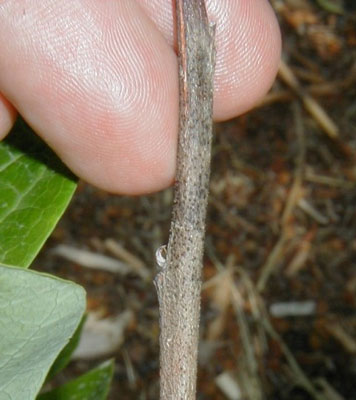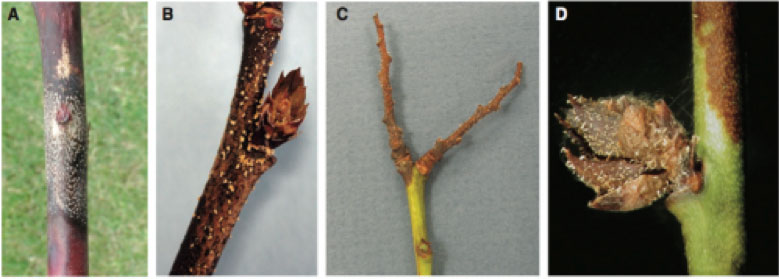We recently came across a great article referring to disease control in blueberries from Michigan State University.
Here is the link to the article on MSU website: https://www.canr.msu.edu/news/dormant_sprays_for_disease_control_in_blueberries
With the mentioning of our copper Magna-Bon CS 2005 for controlling Phomopsis Twig Blight and other canker diseases, we wanted to share a little more in depth on the application rates as well as the full detail of a spray schedule!
The application rate instructions can be found here: https://www.magnabon.com/crop/blueberry/
- When battling disease such as anthracnose or bacterial canker, we recommend 33-51.2 oz per 100 gallons of water. This will give you approximately 125-200 ppm of systemic copper! Make application before fall rains and a second application 4 weeks later. Use the higher rates when conditions favor disease.
- For Fruit Rot and Phomopsis Twig Blight, 25.6-51.2 oz. per 100 gallons of water. This will equate to 100-200 ppm of copper. Dormant Application: Begin applications when bloom buds begin to swell. Make additional applications at 10 to 14 day intervals or as needed before blooms open.
Enjoy the article below by Mark Longstroth, Michigan State University Extension, and Timothy Miles, MSU Department of Plant, Soil and Microbial Sciences.

Southwest Michigan has had a relatively mild winter. This allows cane blight pathogens such as phomopsis (Phomopsis vaccinii) and anthracnose (Colletotrichum acutatum) to survive on old, dead tissues. Spores from these overwintering lesions can infect new growth in spring.
Phomopsis overwinters in dead shoots previously killed by phomopsis (Photo 1). Anthracnose overwinters on old fruit trusses and bud tissue (Photo 2). Dormant sprays offer a chance to clean up this overwintering inoculum and reduce disease pressure at the start of the year.
Dormant sprays have a long history in fruit production. They are applied while the plants are dormant, prior to green tip or bud break. Dormant oils are used primarily to suffocating overwintering insects and insect eggs.
Lime sulfur and Bordeaux mixture were some of the first fungicides used in fruit production. Prior to synthetic pesticides, these sprays were considered a critical part of cleaning plant material prior to the growing season, but after pruning. This is still critical for organic blueberry growers in Michigan.
Bordeaux mixtures are sprays of copper sulfate and lime. They are described by the ratio of copper sulfate to lime in 100 gallons of water. For example, an 8-8-100 Bordeaux is 8 pounds of copper sulfate, 8 pounds of hydrated spray lime in 100 gallons of water. The lime is added to the copper to reduce the phytotoxicity of the copper.
Plants differ in their tolerance to copper. A small amount of spray oil is often used as a sticker spreader in the dormant sprays. After bud break when the green tissue is exposed, the copper rate is reduced to ratios such as 4-4-100 or 2-6-100, increasing the relative lime amount as more and more green tissue is exposed.
Lime sulfur is a mixture of calcium polysulfides formed by boiling slaked lime with sulfur. It is corrosive and unpleasant to work with. Many blueberry growers have been using Sulforix—a more penetrating form of lime sulfur—or copper (e.g., Cuprofix or Magna-Bon) for controlling phomopsis twig blight and other canker diseases. Lime sulfur breaks down after application, releasing sulfur and burning exposed fungal tissues and spores.

Michigan trials with lime sulfur reduced phomopsis twig blight by about half with a dormant lime sulfur application. Two applications, one in fall and one in spring, tended to be slightly better than a single application in either fall or spring. Similar reductions were seen in anthracnose fruit rot and botrytis fruit rot at harvest due to dormant sprays.
Spring dormant sprays of lime sulfur or Sulforix also reduced mummy berry shoot strikes. It appears that the lime sulfur inhibits germination of the mummies and mushroom formation.
When applying these sprays for the first time, follow all the label directions. It may be wise to treat a smaller area or use lesser rates until you feel confident avoiding any phytotoxicity issues.

